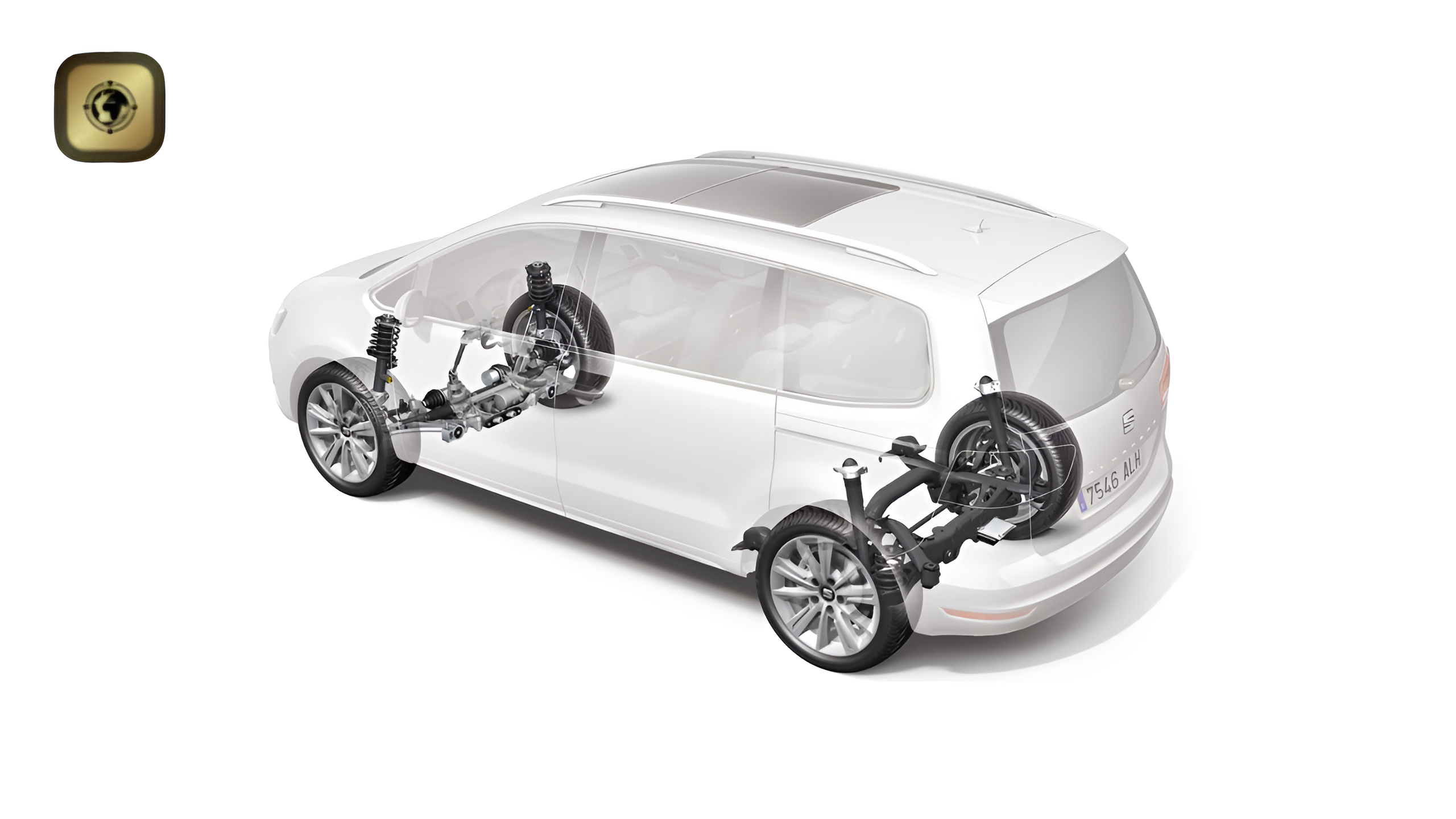March 26, 2025
Although the suspension system is a significant element in vehicle engineering, it tends to be a less familiar and less frequently discussed subject. However, if you wish to understand fully the capabilities of your four-wheeler, it is crucial that you acquire a basic knowledge of the suspension system.
The torsion beam rear suspension system is utilized in cars that connect the rear wheels via a very rigid axle. Its operating principle revolves around torsion and twisting.
The effective operation of a torsion beam rear suspension in a car relies on various factors, including the intended use of the vehicle in question. For routine daily commuting of a standard compact vehicle, the torsion beam proves to be quite practical, while remaining cost-effective.
However, it is important to mention that the torsion beam rear suspension is predominantly utilized in compact vehicles such as hatchbacks and superminis.
- How does the torsion beam rear suspension work in a car?
A torsion beam is typically a metal rod that links the rear wheels. When a wheel encounters any irregularity or bump while traveling on the road, this beam effectively twists. This action transmits the force to the other wheel. It produces a synchronized movement without compromising the smoothness of the ride as much as possible.
The dual arms located behind the wheels are connected through another bar or rod, which acts as a stabilizer. This arrangement provides the wheels some space while still being linked by the bar. However, it should be noted that this is not a solid axle, but rather a slightly more flexible alternative. Torsion beam suspension configurations connect the rear wheels through one beam, maintaining a simple and cost-effective design. However, in the case of independent suspension, each wheel has the opportunity for independent movement, which ultimately improves overall comfort and eases handling, though often at a higher cost.
In this context, it should be stated that regardless of your vehicle’s suspension mechanism, you must uphold a valid car insurance policy to comply with legal requirements. This can be a basic third-party car insurance plan or a more comprehensive car insurance policy.
- Some of the fundamental advantages of torsion beam rear suspension are as follows:
Cost-effectiveness:
In comparison to independent suspension systems, torsion rod rear suspension setups are considerably more cost-effective in both manufacturing and installation.
Fewer bushings:
Simplicity is the hallmark of the torsion beam rear suspension system. This results in the need for fewer pivots and bushings, thereby reducing potential failure points and the complexity of maintenance. This keeps overall maintenance costs low.
Durable:
Torsion beam suspensions are recognized for their toughness and longevity. This makes them suitable for even the most challenging road conditions. It positively contributes to the overall lifespan of the vehicle.
Lightweight:
Unlike many other suspension types, torsion beam suspension systems are relatively much lighter. This enhances the total fuel efficiency and performance of the respective vehicle as the overall weight of the car remains comparatively much lower.
Clutter:
The overall configuration of torsion beam rear suspension systems is comparatively much more streamlined and uncomplicated than numerous other alternative suspension setups. Such a design effectively reduces clutter in the vehicle’s undercarriage. The straightforward design of this suspension type is suitable for easy maintenance and offers an aesthetically pleasing and comparatively cleaner look.
Space:
Due to the compact design, the torsion beam rear suspension occupies comparatively much less space within the vehicle’s chassis. This allows for more effective and appealing utilization of the additional space, providing a more spacious and versatile interior cabin layout.
However, in spite of numerous advantages, the torsion beam rear suspension system has some typical drawbacks as well. You should be aware of the complete situation in advance to make an informed decision. Some of the significant disadvantages include the following:
Noise:
In comparison to other alternative suspension types, torsion beam suspensions produce more noise. This may have a slight impact on the overall driving and riding experience.
Height adjustment:
There is limited customization potential because of the restricted scope for height adjustments. This may influence the fine-tuning experience of the ride height of the specific vehicle.
Compliance with high chamber:
Torsion beam suspension setups may demonstrate compliance with higher chambers, affecting the overall wheel alignment during dynamic maneuvers.
Oversteer:
The standard design of the torsion beam rear suspension system can contribute to oversteering tendencies. This may influence the handling characteristics of the affected vehicle.
Fatigue:
Since the torsion beam continually twists, it may result in weld fatigue over time. This could potentially jeopardize the overall structural integrity of the entire suspension system.
Vibration:
As the mechanism of the torsion rear suspension transfers an increased number of vibrations from the road to the vehicle’s cabin, it may impact the overall ride comfort.
Ride quality:
When compared to other advanced suspension systems, the overall ride quality of vehicles with a torsion suspension system may appear somewhat rough, particularly on challenging terrains.
- Conclusion
Torsion beam rear suspensions offer the potential to be modified for performance improvements. It is particularly recognized for its remarkable balance between practicality and durability. Weighing all the pros and cons, it ultimately depends on the buyer’s choice whether to choose it or not. You must thoroughly examine all aspects before making a final decision.
This article highlights the fundamental mechanism of the torsion beam rear suspension system and its operational strategy; this will assist you in making an informed decision prior to completing the purchase.
- Disclaimer: The above information is for illustrative purposes only. For further details, please consult the policy wordings and prospectus before finalizing the sales.



Leave A Comment